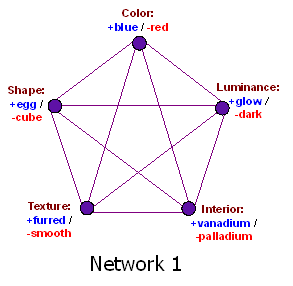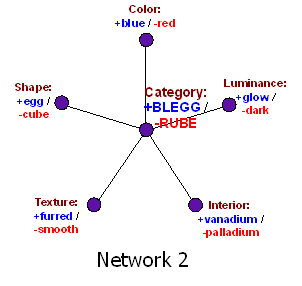December 17 2018 RRG Notes
Disguised Queries
Previously discussed on April 30, 2018
- Imagine that you have a job sorting objects into two bins
- Blue, egg-shaped objects go into the “blegg” bin
- Red, cube-shaped objects go into the “rube” bin
- Once you start working, you notice that bleggs and rubes differ in ways other than their color and shape
- Bleggs are furry, whereas rubes are smooth
- Rubes are hard, whereas bleggs flex slightly to the touch
- Bleggs are opaque, whereas rubes are translucent
- One day, you encounter a strange object
- Color is halfway between red and blue, i.e. purple
- However, this object shares all of the other characteristics of a blegg (egg-shaped, furry, opaque, etc)
- So is it a blegg or not?
- You then find out that the reason bleggs and rubes have to be separated is that bleggs contain vanadium and rubes contain palladium
- So is that the real difference between bleggs and rubes?
- What if 2% of the time, a blegg contains palladium instead of vanadium?
- Asking whether something “really” is a member of a category is a stand-in for some other question
- Categories are lines we draw in thingspace
- Arguing about categories is useless unless you’re using those categories for something
- Objects don’t suddenly change their characteristics when we recategorize them
Neural Categories
Previously discussed on April 30, 2018
- Suppose we’re creating a neural net to classify bleggs and rubes
-
A naive neural net would represent all of the characteristics of bleggs and rubes as nodes and would have links from every node to every other node

- When this neural net sees something that’s purple, but still egg-shaped and furred, it will still successfully classify it as vanadium-containing
- The categories of “blegg” and “rube” are implicit, emergent properties of the neural network, rather than explicit nodes
- However, this neural net has a few problems
- Large number of connections required - every node has to be connected to every other node
- Takes a long time converge - signals have to propagate forwards and backwards before the neural network converges on a judgement
-
A better neural net looks like

- This neural net has an explicit node for the blegg/rube distinction
- As observations come in, they activate nodes which feed into the explicit node, pushing it above or below the activation threshold necessary to declare something a blegg or a rube
- This neural net is much more efficient and converges to an answer much more quickly than the previous naive neural net
- Because of this, it’s probably a better way to model how our brains actually handle categorization problems
How an Algorithm Feels From The Inside
Previously discussed on April 30, 2018
- The second neural net above gives us an intuitive answer for why we get into arguments over definitions
- Most of the time, input from the world is unambiguous - something is either a dog or a cat, and central node either activates or doesn’t
- We run into problems when there’s ambiguous input - the central node is either just below or just above the activation threshold
- This results in the feeling of uncertainty about whether an object “truly” fits into the category we have assigned it to
- If our minds were constructed like the first neural net above, once we’d observed the physical characteristics of an object, we wouldn’t feel like there were any questions left to ask
Disputing Definitions
- Conversations, even conversations about cognitive science, often end up circling around definitions
- If something is true “by definition”, it’s true in all possible worlds, and thus cannot constrain your future expected observations
- Dictionaries record usage, not meaning – the only thing a “dictionary definition” tells you is how people in the past have used the word
- Arguing about definitions is rarely a productive use of time
- If you find yourself in an argument about definitions, try to break down what you’re talking about into specific, “low-level” components which correspond to things which can be observed and measured
Feel The Meaning
Previously discussed on April 30, 2018
- Words don’t have meanings; we assign words meanings in order to communicate
- When we hear a word, our brains will automatically translate that word into its associated meaning
- Most of the time this works very well, and is the reason that we can communicate at all with speech or text
- However, when two people use a word differently, confusion occurs because the same word points to different concepts in each person’s mind
- This results in arguments about whether an object is “truly” part of a particular category
- We forget that categories are part of the map, not the territory